
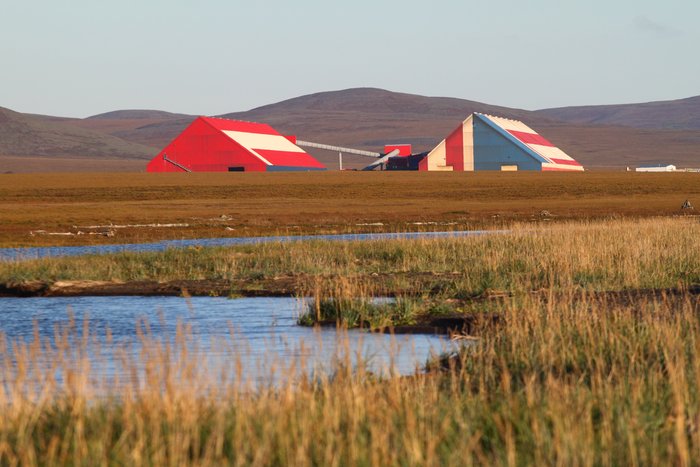
It was the only facility bigger than a village school we’d seen in two weeks. As we walked the beach south of Kivalina, two buildings towered above the golden tundra grass. Constructed in a flag-inspired pattern of red, white, and blue, the ore-storage buildings at Red Dog Port are the largest buildings in the state - over twenty million cubic feet for the larger one alone. Along with the ore barns, an array of barracks and other facilities speckled the landscape, ending in a dock protruding into the Chukchi Sea. A giant ore ship waited off shore, loaded by an alternating series of barges.
Red Dog is a zinc and lead mine in northern Alaska, located about 80 miles north of Kotzebue in the Northwest Arctic Borough. Operated as a joint venture between the NANA native corporation and the Teck mining corporation, this mine is the second-largest producer of zinc in the world, and the richest mine in Alaska. A 50-mile road connects the mine in the hills to the port on the coast. Trucks haul ore down the road, where it sits in the giant buildings, waiting for the summer’s 3 month shipping season.
Long before we reached the hulking buildings, Red Dog Mine stuck out. Through all our research, Red Dog stuck out as one of the only industries and employers in the region, and the only tax-payer in its entire borough. Red Dog stuck out at the top of the list in the EPA’s annual Toxics Release Inventory. Red Dog stuck out as just the sort of place that needs perpetual treatment to prevent acid and heavy metal release into downstream waters. Red Dog stuck out as the main source of income not just for locals, but for village corporations a thousand miles away.
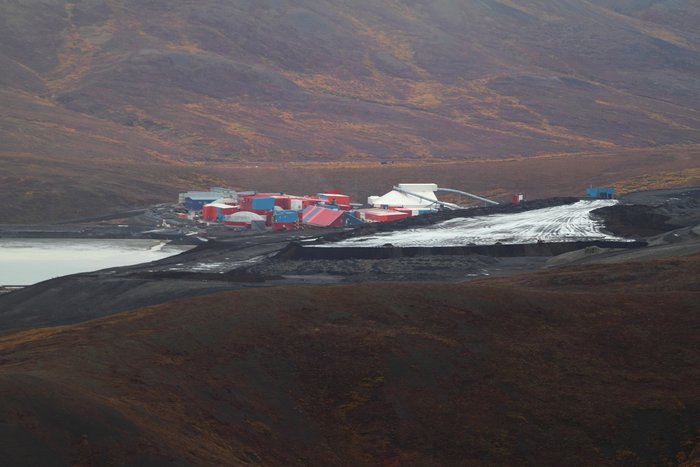
The iconic symbol of a happy red dog and the words “Red Dog Mine” graced tote bags and sweatshirts throughout the village of Kivalina. A twelve year old boy in the house we stayed in talked about his ambition to operate machinery in the mine when he grew up – a job that would let him continue to live in Kivalina between shifts at the mine.
“Back when they were deciding whether to do the mine,” said one Red Dog worker, “the thing that finally convinced the elders was that young people could stay in the villages. Back when I was a kid, everyone had to leave for boarding school in high school, and there were only a few of the men in town that had jobs. More than the money even, they wanted the jobs, so all the young people didn’t have to leave.”
Over half of Red Dog’s workers are NANA shareholders - native Alaskan residents from nearby towns and villages, and stakeholders in the company that owns the mine. Jim, the mine PR guy, said they’d like to get to 100%, but haven’t had much luck pushing the numbers farther, Despite Red Dog’s training programs, many mining jobs require technical expertise that the locals don’t have. Locals with advanced training often leave for other companies. And part of it is the lifestyle. Like most jobs in resource extraction, Red Dog is a camp job. Workers often spend two weeks in camp, then one week at home before flying out again. It’s a tough life. For anyone responsible for caring for kids, it’s an impossible one, which is probably part of why the workforce is overwhelmingly male.
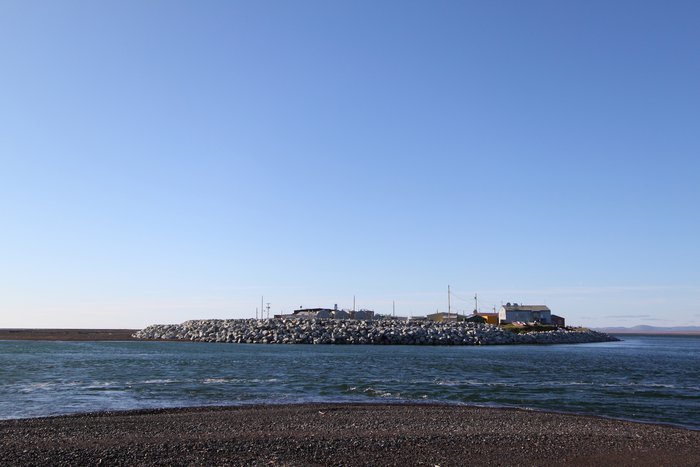
During a fall storm in 2007, hundreds of Kivalina villagers evacuated to the Red Dog Port. Watching Katmai play in the dining room, our host at the port reminisced fondly about the halls full of children during that storm – unusual in a camp where there are never families, only workers.
The relationship between the mine and its neighbors is complicated. While the village of Noatak is closest to the mine, Kivalina lies downstream. Discharges from the mine end up in the Wulik River, and eventually in Kivalina’s drinking water. Kivalina residents have sued Red Dog over violations of their discharge permits, setting off a multi-year legal battle with the mining company. While Red Dog’s treatment systems are largely successful at preventing discharge of metals and acid, they have routinely violated the permit limits for Total Dissolved Solids. We asked one of our hosts what he thought of Red Dog as a neighbor. He paused for a minute, and answered cautiously, “Except for all the pollution, they’re a good neighbor.” He explained that when the mine got started, it caused a big fish kill in the river, and that even now, villagers could taste the difference in the water.
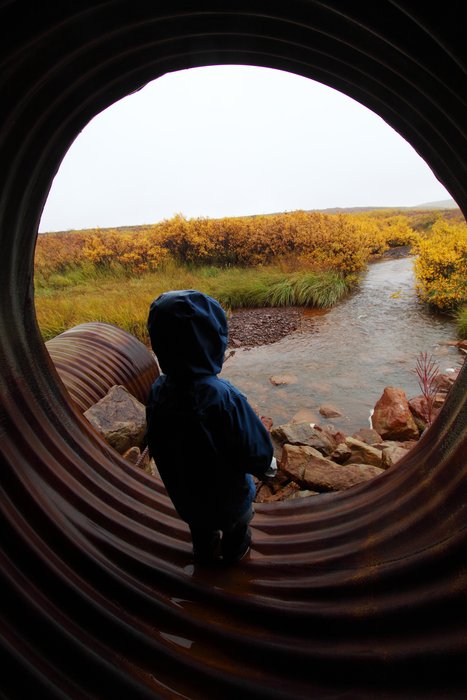
Jim gave his side of the story as his van zipped along the road connecting the port to the mine. When we brought up Kivalina he sighed. “We got off on the wrong foot with that town,” he explained – confirming the fish kill, but emphasizing that all those problems had been cleared up long ago. From his point of view, the villagers were stubbornly refusing to accept the scientific evidence that Red Dog’s current practices posed no danger to their water or the wildlife they depend on. He wondered if some people in Kivalina had been led to believe that the lawsuits would get them money to help relocate their village. Kivalina is eroding into the sea, the victim of fall storms crashing onto open beaches that used to be protected by ice.
There’s probably truth in both sides of this story. The average Kivalina resident, like the average citizen anywhere, isn’t well versed in the science of water chemistry or in how to evaluate scientific arguments. And the true toxicity of chemicals and pollutants has often become clear only years after their ubiquitous presence - such as for leaded gasoline, DDT, or tobacco, among many others. Locals are left with the unenviable position of deciding who they trust, a process that is inevitably irrational.
Industry proponents often tell you to trust the regulations, insisting that the “rigorous permitting process” would never let them do anything that caused environmental harm. But there’s a difference between a lot of paperwork and fail-safe protection. When something goes wrong (like the Deepwater Horizon oil spill, the Tennessee coal ash spill, or countless other pollution incidents that never make the news), permitting has clearly failed to prevent it. And though industry is quick to tell you that regulation is a trustworthy protection, they rarely push for more regulations after one of these failures.
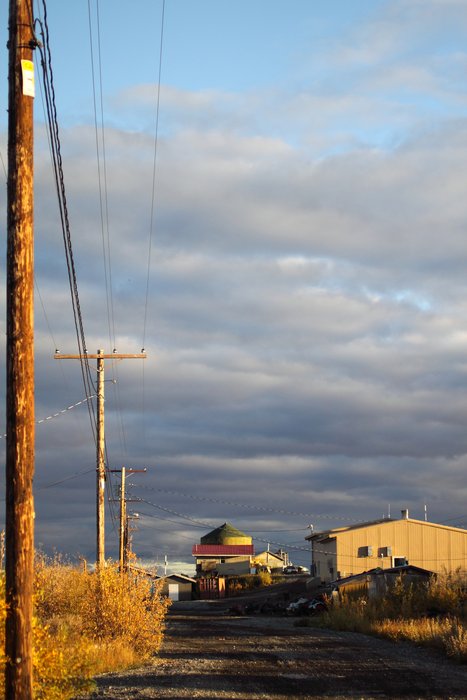
Regulations change over time. Jim explained away many of the mine’s current and former problems with some version of “back in the 1980s when this mine got started, no one thought about those things.” Like lead and zinc dust blowing off the trucks and on the road. Like the risks to humans and fish from total dissolved solids in the water.
Back in the 1980s, I suspect mining proponents were telling everyone to have faith in the “rigorous permitting process” just like they do today. Our regulations have never been perfect, and have never been perfectly implemented. Why would we assume they are today?
And what about tomorrow? Jim led me around the mine site, showing me all the complicated and careful procedures they use to treat the water before it is released, and how they make sure their discharge doesn’t overwhelm the creek. He seemed proud of its complexity and thoroughness. But when the mine is gone, all of that must stay.
Red Dog’s closure plan says that when the mine eventually closes, they’ll still need 7 year round workers, 15 in the summer, to run a plant treating 1.4 billion gallons of water each year. To do it, they’ll ship in 7,300 tons of lime annually, creating 70,000 tons of sludge (containing settled out heavy metals) every year. That sludge will have to be funneled into ponds, frozen in sheets in the winter and then stored somewhere, filling the mine pit until eventually it overwhelms the space and a new spot must be found. This will cost $10 million dollars each year. For this to make financial sense, an investment made today must generate $10 million in interest every year…forever.
Jim acknowledged all this, then pushed it aside. “Maybe, eventually, there’s a point where we just don’t care anymore. Maybe society has other issues by then.”
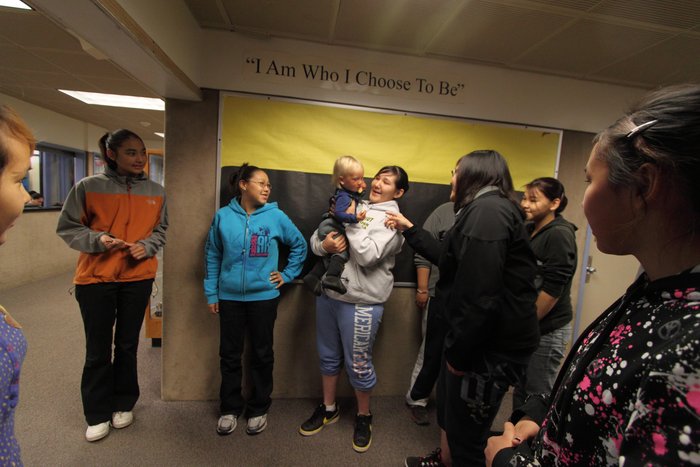
Zinc and lead are useful commodities. Jobs and money are useful too. And maybe society will have other issues by then. In the race to stay alive, maybe no one will care if there are caribou on the tundra or fish in the river. Maybe no one will have the time or the luxury to think about whether they and their children are drinking clean water. A world pockmarked with a toxic legacy will be the only world they’ve ever known. But that’s not the future I’d like to believe in.
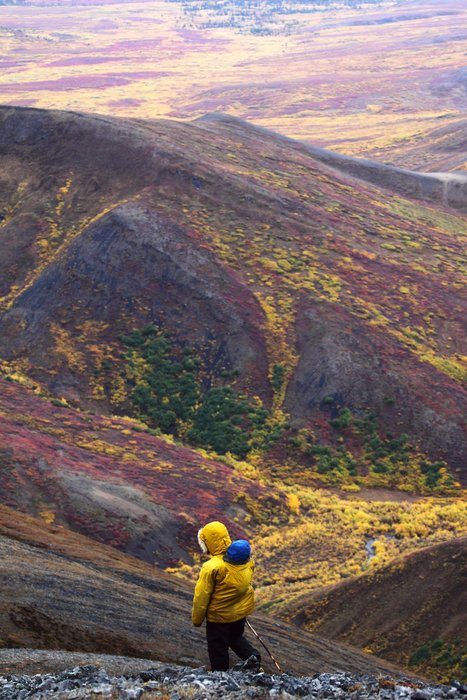
Red Dog is actually in a better position than most mines to keep tabs on long-term consequences, as Jim reminded me.. NANA, the local native corporation, owns the land, and operates the mine along with the foreign mining company. With shareholders across the arctic depending on the ecosystem for their subsistence, NANA has real motivation to keep their land and water safe. NANA would like to take over management of the closure bond, taking it away from a government that may someday have other issues, leaving the people of the northwest arctic to tend to Red Dog’s legacy on their own.
A few days after the tour, we stood on a hill in the drifting fog, staring across the red-gold tundra to the airport, road and tailings pond. With the strict rules against photography at the mine site, it was the only way we could get a picture of the mine.
“Red Dog Mine nice?” asked Katmai
“I don’t know,” I told him. “That’s not an easy question.”
Created: Jan. 19, 2018